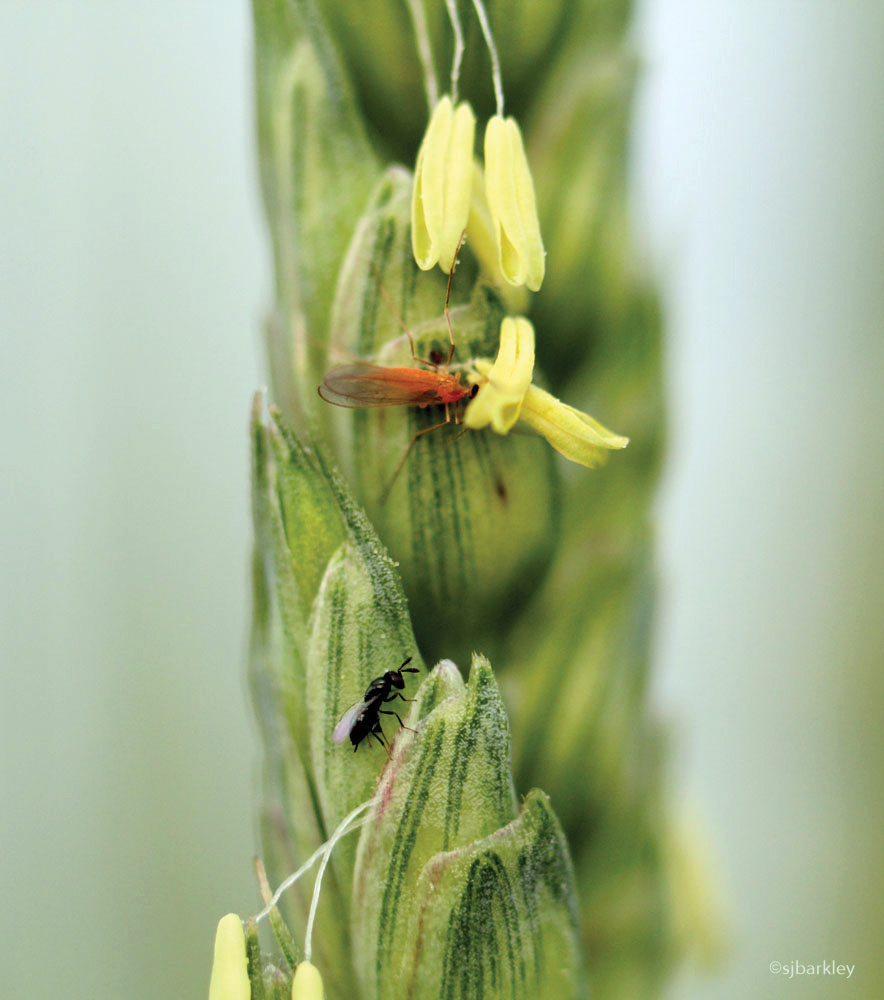INSECT AMBASSADORS
BY IAN DOIG • PHOTO COURTESY OF SHELLEY BARKLEY
They would rather munch a pernicious pest than deliver a speech, but beneficial insects may be a valuable public relations ally for farmers.
In Biological Control, a new book on the use of living organisms to control pests, federal entomologist Haley Catton contributes a chapter on public perception. To earn buy-in from farmers and the public on the use of insects and fungi as pest control agents is no simple task despite potential benefits, such as higher crop yields and decreased use of pesticides. Occasionally, in past decades, biological control failed spectacularly and the public took notice. In Australia, for instance, the cane toad was introduced to control sugar cane beetles in the 1930s. This hungry generalist with poison-secreting skin did not suppress the beetle, and has since multiplied like a biblical plague and damaged indigenous animal populations. “So, when somebody who works in modern biological control talks about introducing a specialist insect to combat crop pests, most people would say, ‘Oh, no! You’re introducing another cane toad,’” said Catton. “The failures are visible for decades or centuries. That’s a recipe for bad public perception. The many successes are invisible to the public.”
Her contribution to the book is an analysis of soured public perception and how this can be rectified. She emphasized the public should know misguided introductions are a thing of the past. “Modern biological control is really advanced, regulated and specific,” she said. “And, oftentimes, biological control systems are self-sustaining.” Ideally, the introduced organism establishes itself on a diet of one pest and both populations remain low.
The Prairie poster insect for this type of relationship is Tetrastichus julis, a miniscule parasitic wasp. It lays its eggs within the larvae of the cereal leaf beetle, a pest with an appetite for wheat, barley and oats. The wasp’s young hatch and eat the larvae. The beetle is kept in check and rarely reaches noticeable numbers.
With a limited amount of survey data on the subject to draw from, Catton concentrated on subgroups of the public and how agriculture can build trust in biological control within each. She stressed the public holds legitimate concerns about biological control, but trust can be built when relevant information is shared. “No matter how much science we do, if the public isn’t on board, it’s never going to have the positive impact that it could.”
From farmers, scientists, conservationists and Indigenous groups to activists and food consumers who may know little about ecology, messaging about biological control must speak to personal values. And while certain people may hold a blanket mistrust of scientific information, most want a safe environment for their families and see reduced pesticide use as a positive.
An example of such persuasion in action, Catton works with Field Heroes, a communications campaign conducted by agronomists, entomologists and farmers to promote acceptance of beneficial insects. She agrees positive perception of biological control may allow agriculture to use insects as public trust ambassadors for the entire sector. “It’s definitely possible, because when biological control works well, it’s sustainable, there is no pollution and no non-target effects. All this is a requirement in modern biological control.”







Comments